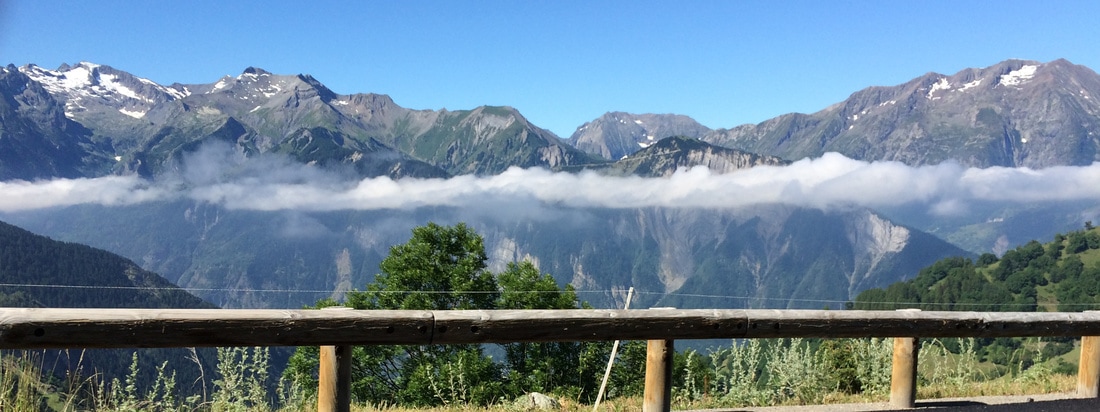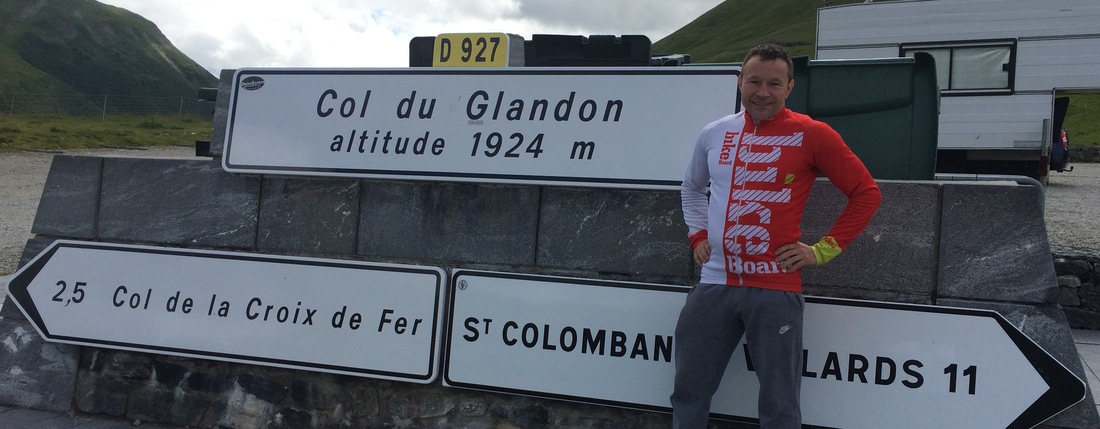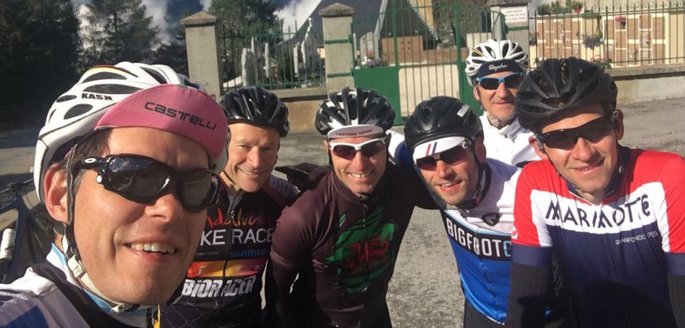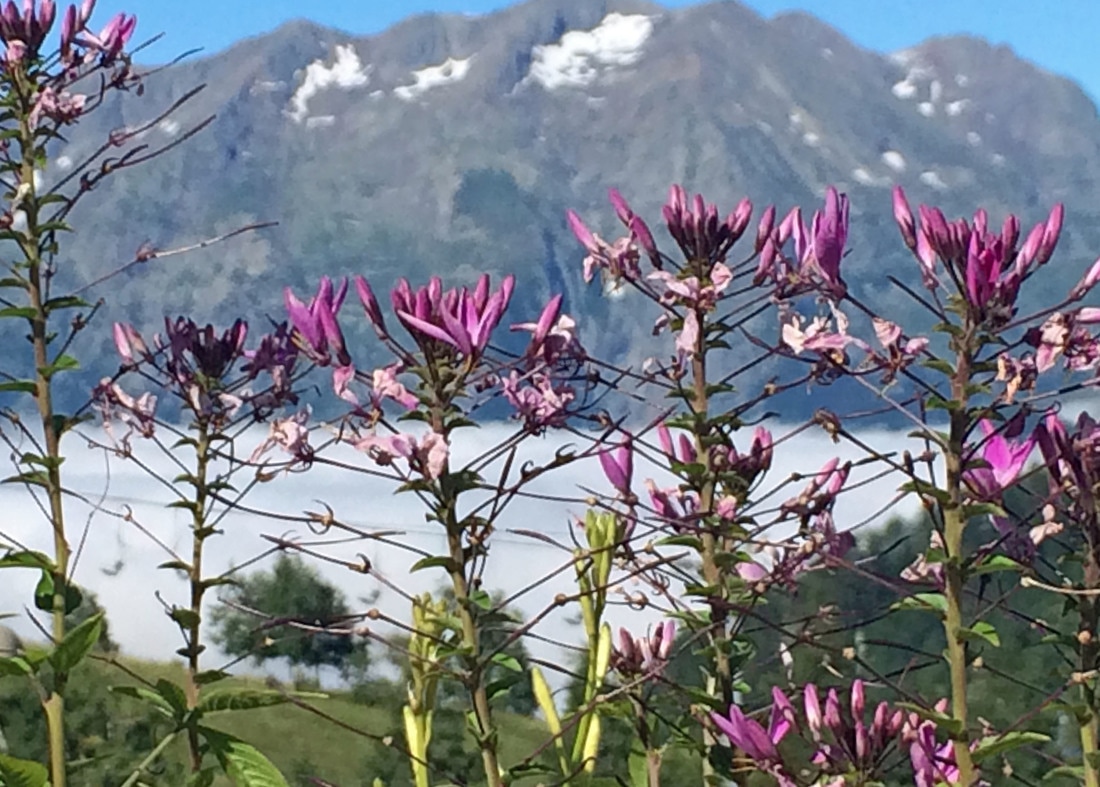Nothing Short of Sensational
Touted as the hardest one day road Sportive in Europe, the Alpes Marmotte certainly has a fearsome reputation among the amateur cycling fraternity. With over 7,500 entrants, the Granfondo takes in four legendary mountains which regularly feature in the Tour De France, the Glandon, Télégraphe, Galibier and Alpe d'Huez, and covers 174 km with around 5,000 metres of climbing. Stories abound of participants bursting into tears of joy and relief at the finish, while others talk of the carnage of broken riders at the side of the road during the final climb of Alpe D'Huez.
The weather in the high mountains is unpredictable and the days leading up to the 35th edition of the Marmotte were not encouraging, with cool temperatures and rain forecast. Arriving in Geneva, three days before the start, merely seemed to confirm the predictions with storms unleashing heavy precipitation on the Swiss city. With one day before the event, the weather took a positive turn and the black clouds were pushed aside by less threatening skies. But still atop the 2645 m climb of the Galibier the temperature was -2 degrees and snow had fallen.
To begin the event, it was necessary to descend from our base in Alpe D’Huez to the start at Bourg D’Oisans. Extra layers of clothing were shed at the start but despite the coolness hanging in the air it was dry and, incredibly, no rain was predicted. Despite the organisers sending the second start wave round the town and early confusion and frustration ensuing, we were eventually on our way, immediately forming trains of equally paced riders and tapping out a fairly quick tempo to the foot of the first climb, the Glandon.
It is sensible to heed the advice of others and not to let the adrenaline, built in the early fast kilometres, to flow uncontrollably to the head. The overall gradient of the Glandon is relatively steady, averaging 5%, but the climb has some downward pitches which lower the average and is extremely long, continuing for 28 km. It was here that the field began to spread out, making it necessary to move past others on the left, a pattern to be repeated throughout the race. Even quicker riders seemed to pass effortlessly on my left, which seemed to confirm the high standard of competitor in this event. The road dropped steeply for short sections, which tended to break the early rhythm rather than offer relief, before pointing up once again to the clouds and mist above. On a drive the previous day, I had seen a succession of spectacular waterfalls but now these could only be heard momentarily as they were passed in the gloom. Nearing the top, the mist had wrapped itself all over the peak, only to unveil a rather chaotic feed station. Despite this section being time-neutralised, due to the danger posed by the descent's steeepness, I lingered a little too long. I was sweating from the climb and the chill in the air immediately dropped my body temperature.
I began the descent with an additional windproof gilet but I was cold and longed for the warmth of the valley. I decided to descend with care, knowing I wouldn’t lose any time. Just as I had stopped the shaking, my lower back began to ache and unfortunately I was unable to enjoy the flowing corners lower down the mountain. I saw a couple of my riding buddies before the timing mat, which would signal the end of the neutralised zone. On dismounting my bike my left quadricep cramped painfully and didn’t release for 30 seconds. Not the best sign so early on into the event – now I would have to manage the cramp for the next 140 km.
We rode through the valley, larger groups formed and the pace increased. I ignored the water stop at the foot of the Telegraph climb, keen not to break my rhythm. The one hour climb up the Telegraphe was exhilarating, with incredible mountain views all around. The gradient averaged 7% but the climbing was constant and the legs were now accustomed to tapping out a steady beat. A brief descent took riders to the beginning of the Col Du Galibier. Again, I ignored the feed station, content in the knowledge that I was feeding and hydrating successfully on the bike, a skill I'd acquired from nine solo 24 hour mountain bike events, and keen to avoid the scrums of hungry and fatigued cyclists.
It was at this point, I began to notice I was travelling far more comfortably than the riders around me and I was moving quickly through the moving mass of cyclists ahead of me. I would sporadically jump out of the saddle to offer relief to my legs as the 18 km began to whittle away. The views were awe-inspiring, particularly the formidable and imposing Meije Mountain peak to the south, the last major alpine summit to be conquered by climbers. The last section of the climb, the steepest, seemed to present itself as a wall of switchbacks ahead. However, I was surprised at the flow that I felt as I made my way up the final section. Making use of a private feed station 1 km from the summit, I grabbed more water and a handful of gels, before cresting the climb. At 2642 m, this is the highest point in the Marmotte, as it has been in previous editions of the Tour De France. I was keen to avoid my mistake on the Glandon, and therefore immediately rolled over the peak and onto the descent.
At around 50 km, this descent is the longest and without doubt the most exhilarating I've ever experienced. It took a while to drop enough altitude to stop the shivering, but on reaching a certain height, it was almost as if the gods had kindly thrown an electric blanket around my torso. The cold was replaced by sore and numb hands and, at times, I had to readjust my grip to confirm I was actually pulling the brake levers. Then I would plunge at spine-tingling speed into the first of several tunnels, more than happy to re-appear on the other side still in one piece. On the lower slopes, we would pass small villages, the gradient would level and offer some relief as I sat more upright and out of the drops, before plunging once again into the valley below.
Finally, I reached the valley floor, and riders regrouped into fast moving pelotons, driving towards the last climb of Alpe d'Huez. To reach the finish in the village at the top of the Alpe d‘Huez it is necessary to navigate the 21 world famous hairpin bends, enduring 14 km of road averaging around 9% gradient. Once again, I ignored the feed station and kept my momentum for the last big climb. The first few bends are the steepest and I wondered how my legs would feel. To my surprise, I was still climbing well and, further to my amazement, I saw my much stronger training partner stretching out cramp at the side of the road. He joined me on the climb, and we chatted as if we were out on a training ride and not finishing a fiendishly difficult bike event. The switchbacks seemed to quickly come and go and then the church on Dutch corner appeared, so-named since Dutchmen won eight of the first 14 finishes in the Tour De France and is where the Dutch now congregate on race day. We stopped briefly at a private water station, primarily to remove clothes added at the top of the Galibier, two hours previously. The temperature was now well into the twenties, quite the change from the freezing temperatures of the Glandon and Galibier.
With 7 switchbacks to go, I continued the final kilometres, my friend hovering just ahead, serving as a guiding light to the top of the col. More and more people appeared on the side of the road offering further encouragement as the finishing line approached. Once through the village, I picked up the tempo, finding energy reserves I had no idea I possessed. With 200 metres to go, I majestically rose from the saddle and began my sprint for glory. Within seconds my gilet fell from my back pocket and wrapped itself around my rear wheel and drive chain bringing me to an unceremonious halt. As I fought to release my gilet, I had a momentary vision of picking my bike up and, emulating Chris Froome's feat on Mont Ventoux in 2016, running with my bike to cross the finish line. These fanciful thoughts were interrupted by one kind spectator who picked up my bike allowing me to finally free my gilet. I remounted to a massive cheer, only for my chain to spin off. A third time, another cheer but I failed to clip in, my foot slipping embarrassingly off the pedal. One final roar, and I appeared to be swept down to the finish, crossing the line in a time of 8:06:59.
Without doubt, the Alpes Marmotte is the most breathtaking ride I've ever experienced on a road bike and I would fervently recommend it to any rider who is looking for a momentous challenge in a spectacular environment. It's incredible to think that the professionals actually race up these mountains, rather than merely survive the day but anyone able to complete this event deserves the utmost respect.
2 Comments
Dave Langley
10/7/2017 06:55:07
Well done and nice write up. Always wanted to do the Marmotte. Hopefully one day!
Reply
Brenda Taylor
10/7/2017 21:19:37
Well done Phil. You did really well, good time. The views look breathtaking. Proud of you xxx A well written piece, as usual.
Reply
Leave a Reply. |
Author
Categories
All
Stage Races
24 Hours 7 hour Enduro Series 12 hour Enduros 6+6 hour Enduros Archives
August 2021
|
| CycoActive - Professional Endurance Cycle Coaching |
|














 RSS Feed
RSS Feed
